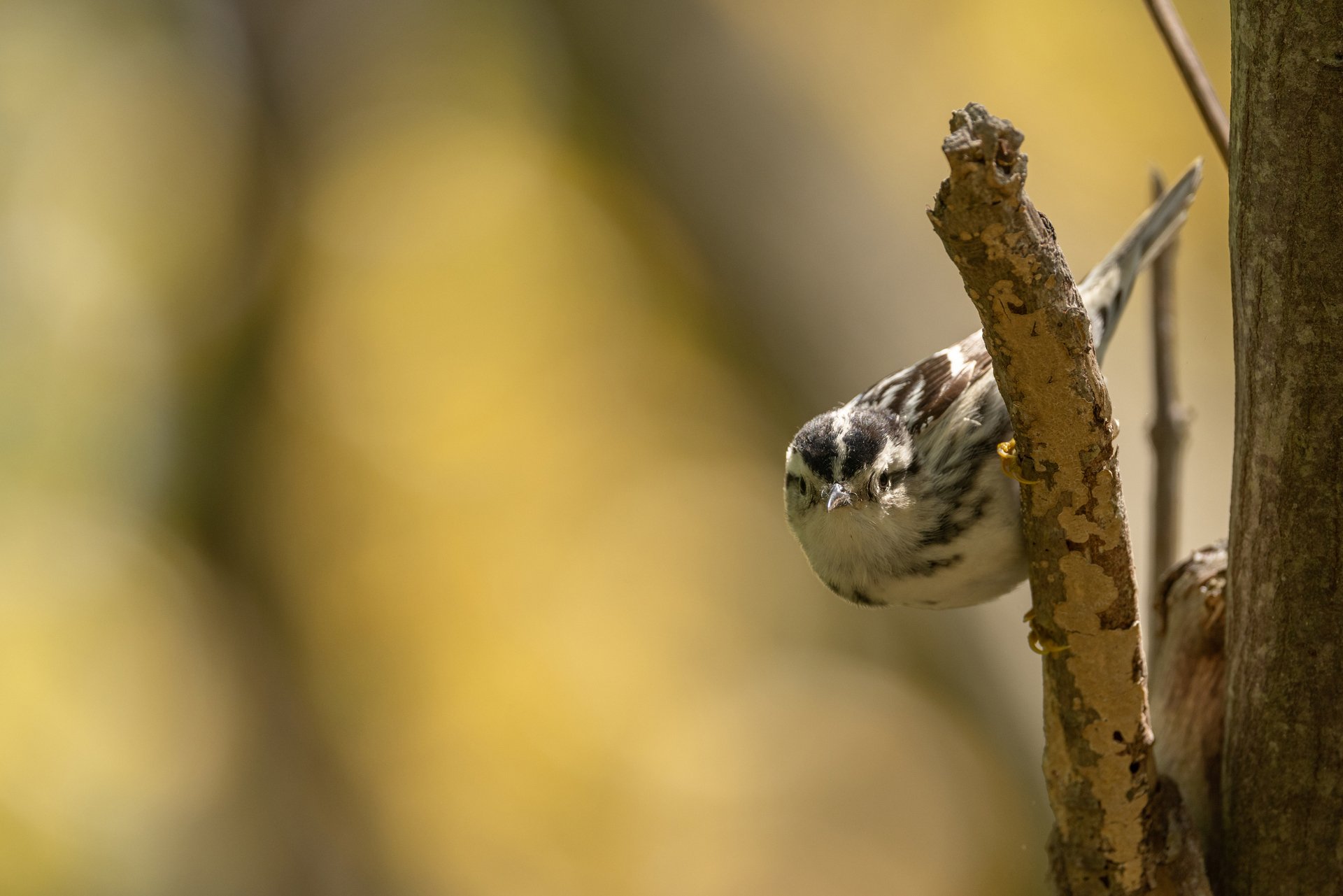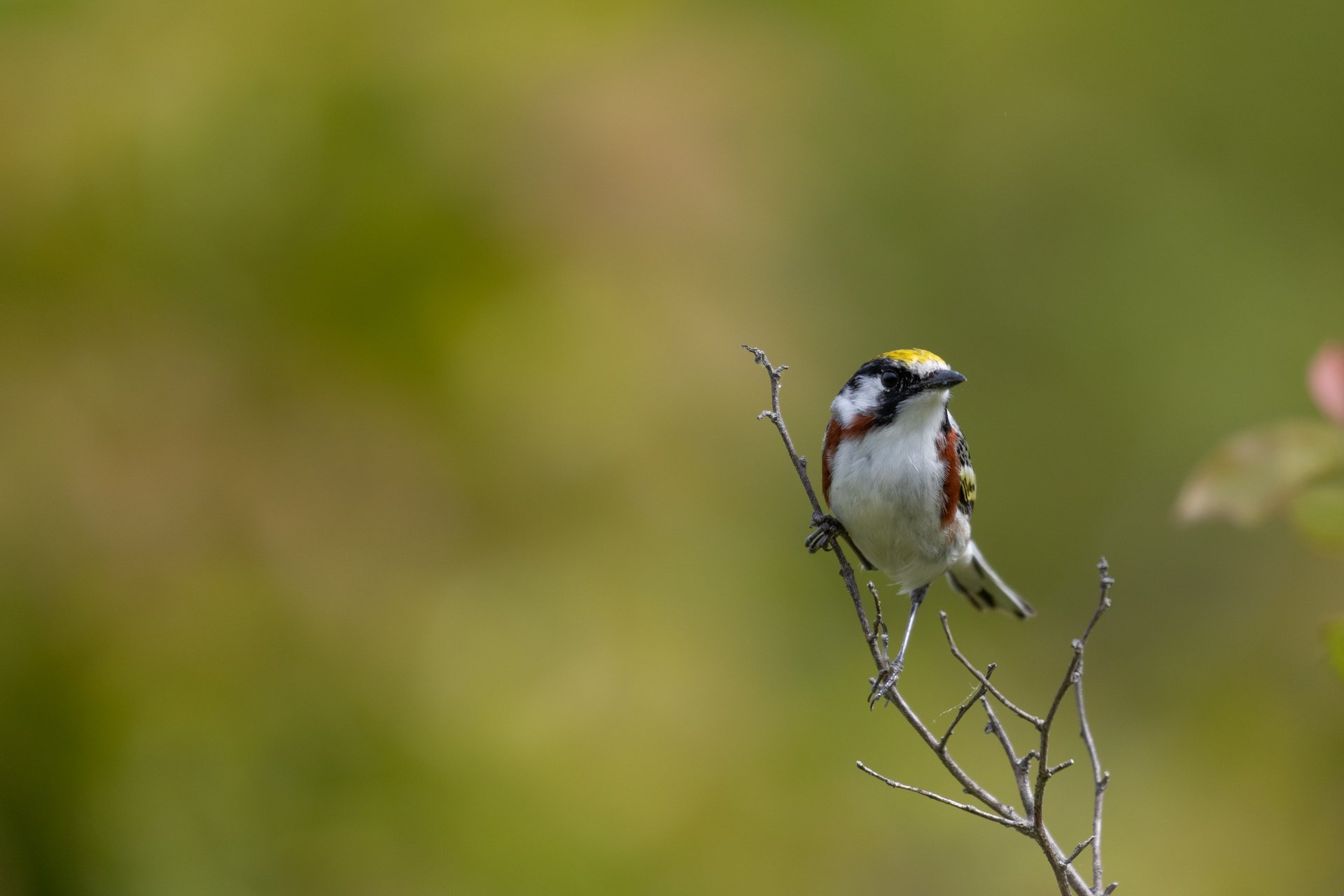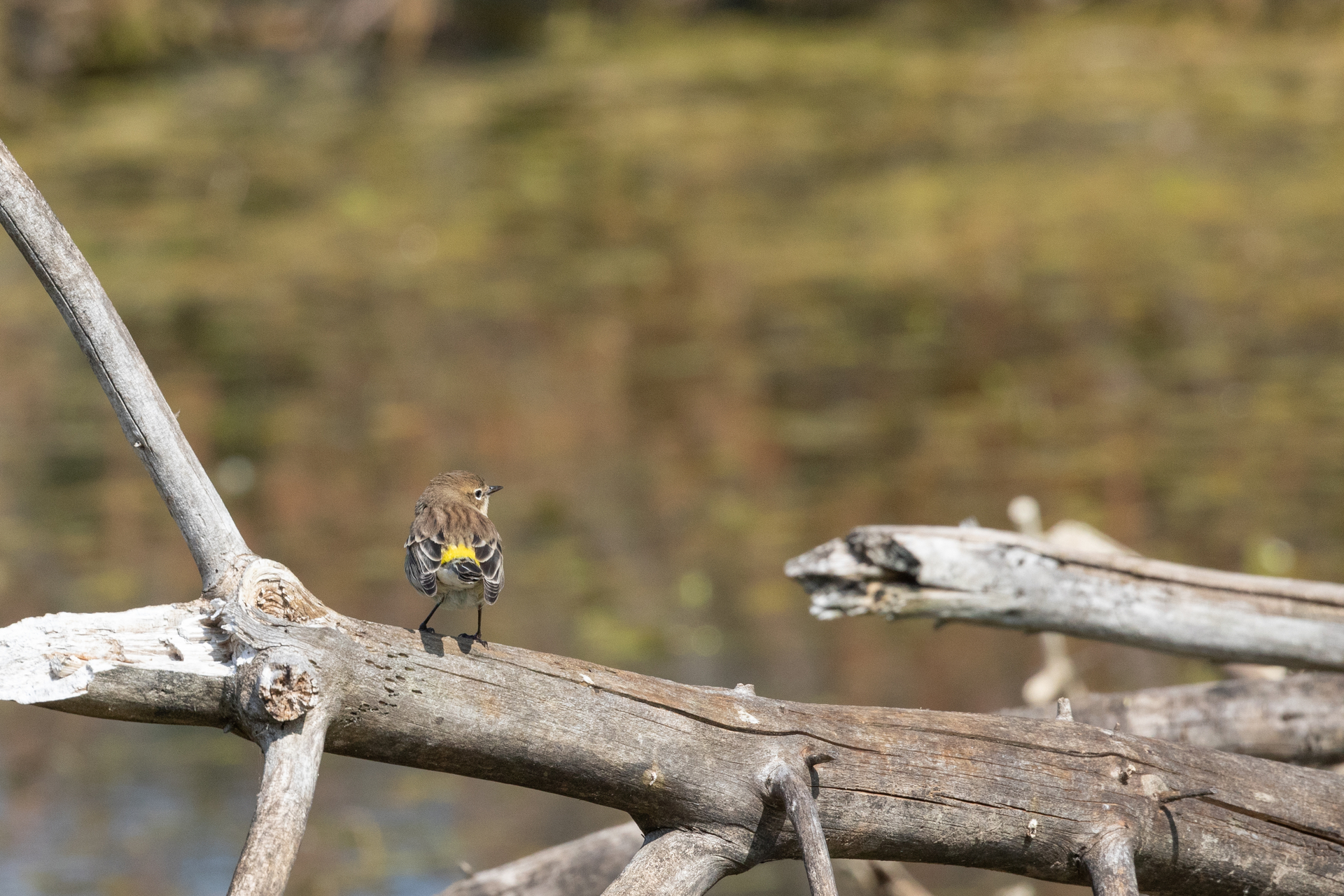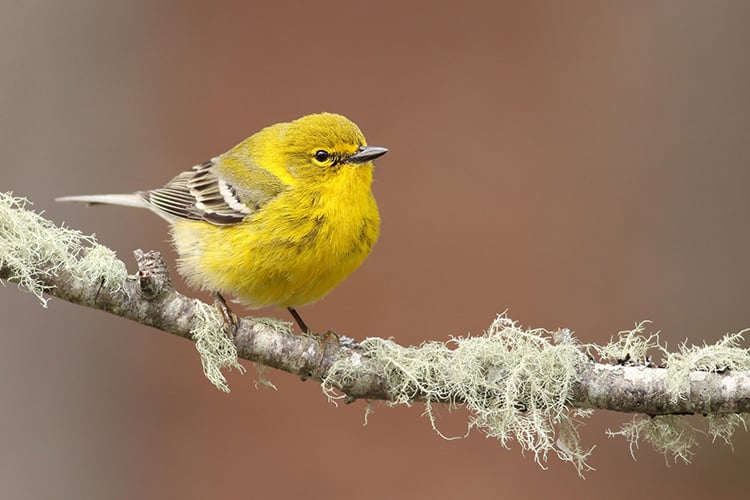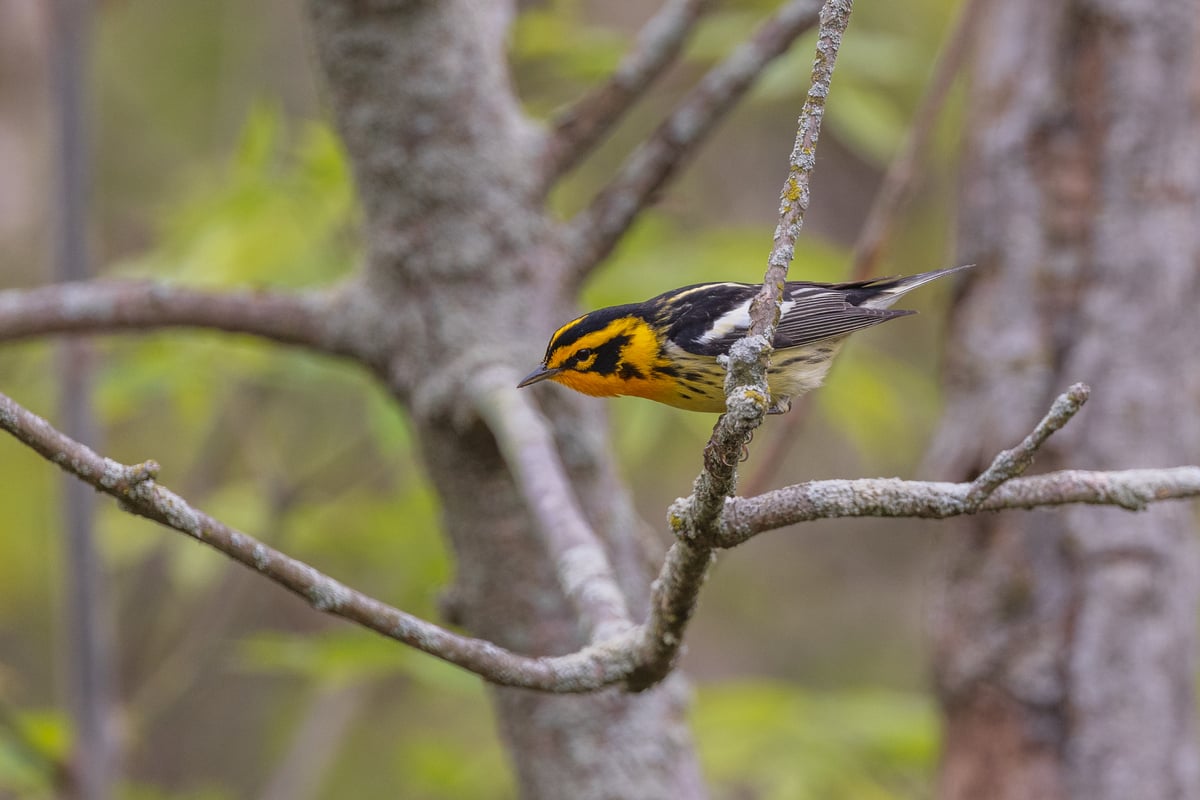Yellow, Black and White, Orange-crowned, Blue-winged—warbler season, with all its colors, is here!
Every May, warblers migrate north from their southern winter locations in their colorful breeding plumage, giving birders the chance for a closer look at these spectacular winged beauties. Approximately 25 different warblers regularly breed in Massachusetts, and another 8-10 species pass through the state.
New World Warblers are the type of warblers we have in Massachusetts. They differ from other named warblers found in Europe. Warblers are small songbirds and often heard before seen. Their small size makes them hard to find as they bounce around the surrounding vegetation.
Learning their melodious songs through techniques such as mnemonics is a key aid in identifying species as you explore. For instance, the song of a Chestnut-sided Warbler can be broken down to ”pleased, pleased, pleased to meet you,” and the Yellow Warbler sounds like it is calling, "sweet, sweet, sweet, I’m so sweet.”
Most warblers migrate and travel long distances to and from their winter range in the southern United States and the Neotropics. This migratory feat is impressive for species that do not weigh more than 20 grams.
When to Go
In mid-May, around Mother’s Day weekend, head out first thing in the morning after warm southerly winds. Warblers migrate when tailwinds from the south help carry them northward.
Most warblers travel at night. As dawn approaches, they begin to disperse into woodlands, orchards, suburban areas, and field edges to rest and forage during daylight hours. When the warm weather and winds are just right, you could be treated to a staggering “warbler wave.”
What to Look for at Mass Audubon Wildlife Sanctuaries
Because our sanctuaries host such a diverse range of habitats—forests with high-, mid-, and low-level canopy, coastal areas, wetlands, and grasslands, to name a few—you can cross many different species of warbler off your birding bucket list. Check out these frequent flyers and not-so-common warblers you may come across.
Yellow-rumped Warblers
As their name suggests, Yellow-rumped Warblers have yellow on their faces, sides, and rumps, or backsides. This pop of color is striking against the gray, brown, black, and white coloring on the rest of their bodies.
Yellow-rumped Warblers are one of the more common species you will come across in Massachusetts. You will see them regularly on any trail at Nahant Thicket in Nahant, Warbler Trail at Marblehead Neck in Marblehead, and Fox Trail at Boston Nature Center in Mattapan. Listen for a sharp “chek” call as they flutter from branch to branch.
Blue-winged Warblers
The Blue-winged Warbler has a similar appearance to the Prothonotary Warbler, with a vibrant yellow body and blue-gray wings. What distinguishes this more uncommon species is a dark eyeline running from its beak to the eye. These warblers occasionally pick at insects by hanging upside down from low branches in shrublands and at forest edges.
Bring your binoculars to Billings Loop at Moose Hill in Sharon, sit on a bench, and watch the warblers dart and dash between the branches on the edges of the forest. In the southeast, at Tidmarsh in Plymouth, quietly listen for the Blue-winged Warbler’s high-pitched, buzzing song during a one mile walk down Volunteer Trail.
Pine Warblers
The properly named Pine Warbler lives in pine forests or woodlands with mixed pine. In addition to insects, this species likes to dine on seeds and may stop by a bird feeder. The Pine Warbler’s pale white belly and gray wings subtly contrast with its yellow face, backside, and upper abdomen.
You’ll probably hear a Pine Warbler before you see one. Stop and listen for a high-toned, repetitive trill on the Old Orchard Trail and Glacial Hill Trail at Broadmoor in Natick. The Silver Spring Trail at Wellfleet Bay in Wellfleet is also a hotspot for spring warblers like the Pine Warbler.
Blackburnian Warbler
If you’re lucky enough to come across a male Blackburnian Warbler, you won’t have any problem identifying it, with its flaming orange-and-yellow face and black markings. These warblers tend to stay up higher up in the trees but occasionally come to the forest floor to forage. Learning their unique “zip” song helps narrow down where to look in the canopy.
The large hemlock and oak trees of High Ledges in Shelburne are a great place to start your search. Take your time as you hike the North Trail and Wolves’ Den Loop Trail and you may see other species such as Chestnut-sided and Black-throated Blue warblers.
Or try the Fern Forest Trail and Chapman Trail at Wachusett Meadow Wildlife Sanctuary in Princeton, where you have the chance to see Black-and-white Warblers and Red-eyed Vireos.
More Ways to Warble
To further your warbler knowledge, join one of our warbler programs. Find a class near you.
Upcoming Birding Programs
See MoreWednesday Morning Birding
-
Newburyport and vicinity
-
Wednesday, March 11
9:30am-12:30pm
Adults
Joy of Birdwatching
-
Rough Meadows Wildlife Sanctuary, Rowley
-
Saturday, March 14
2:00pm-4:00am
Adults
Birds Beyond Identification - Warblers
-
North River Wildlife Sanctuary, Marshfield
-
Friday, April 17
10:00am-12:00pm
Adults
Homeschool - Spring Birding
-
Broad Meadow Brook Conservation Center and Wildlife Sanctuary, Worcester
-
Friday, May 8
8:00-10:00am
Age 6 - 10
Wednesday Morning Bird Walk
-
Blue Hills Trailside Museum, Milton
-
Wednesday, May 13
8:00-10:00am
Adults
Destination Birding With a Scone: Colby-Philips Trails
-
Colby-Phillips Property, Hanover
-
Tuesday, June 16
8:00-11:00am
Adults
Stay Connected
Don't miss a beat on all the ways you can get outdoors, celebrate nature, and get involved.



